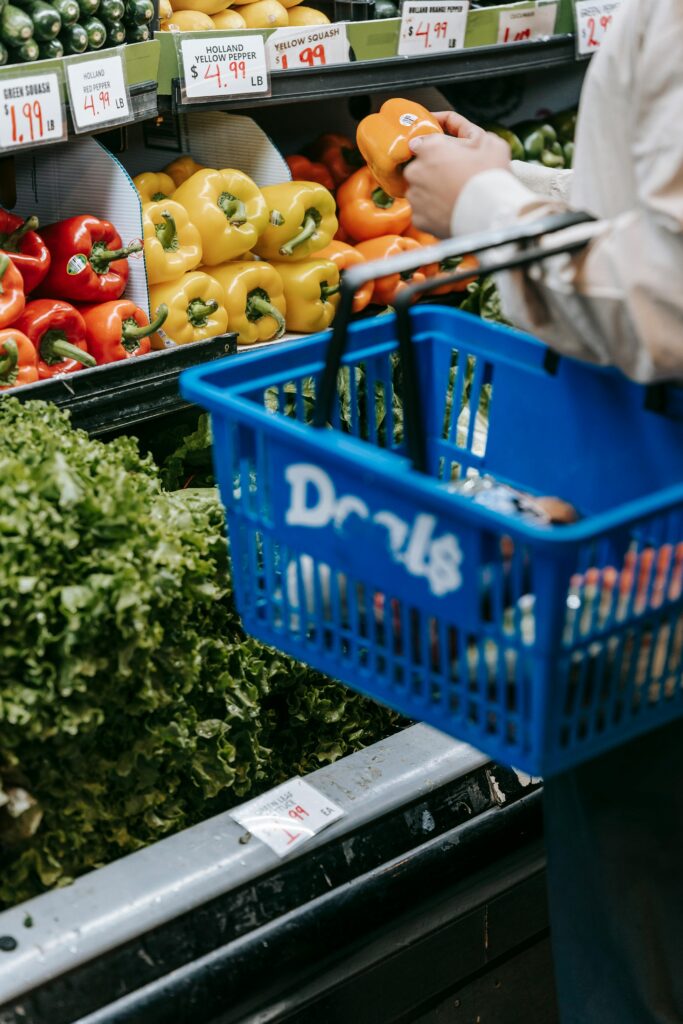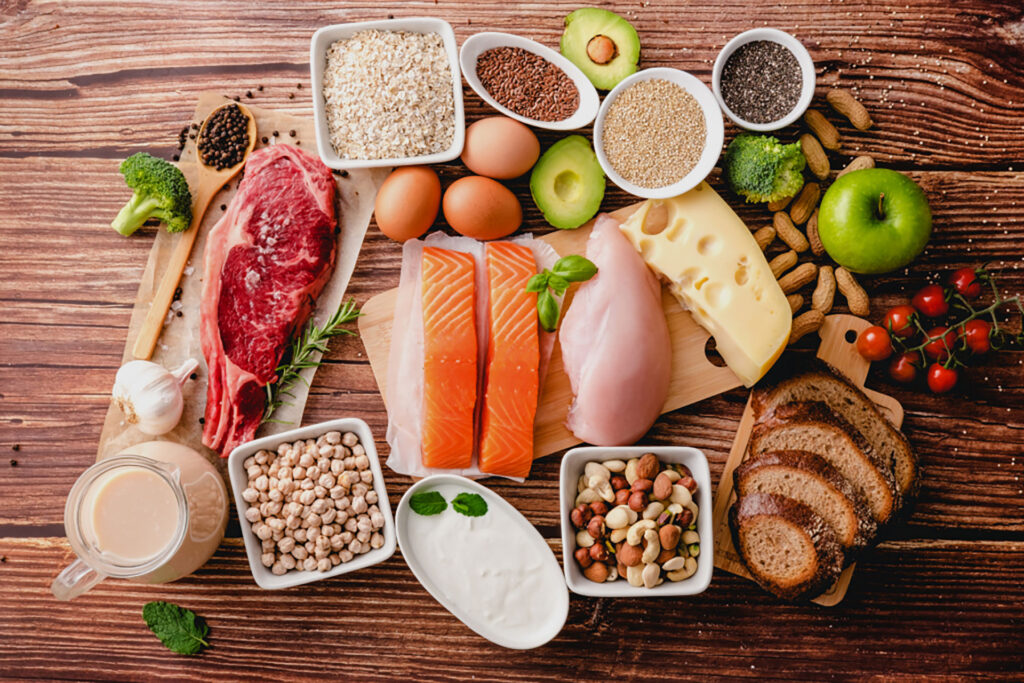To eat organic or not — that is the question

There are many factors that go into an individual’s choice to consume organic food. Most times, the choice doesn’t come down to just one factor. The question that’s usually fiercely debated is whether organic food is more nutritious than conventionally grown foods and, therefore, worth the extra cost.
Organic food may or may not have more nutrients. Agriculture is dynamic, and nutrient density is dependent on more than just growing methods. Current research reports organic fruit and vegetables are higher in antioxidants, while organic meat and dairy are higher in omega-3 fatty acids in comparison to conventional foods.
A recent study showed organic crops, on average, have higher concentrations of a wide range of beneficial plant-based compounds, and people who choose organic foods tend to have higher intakes of essential nutrients like omega-3 fats, fiber, potassium, folic acid, and antioxidants compared to their conventional food counterparts. The nutritional value of all food grown organically or conventionally can vary. Food choices solely based on the belief that there are more nutrients in organic foods may not necessarily be correct.
Tactical athletes are always looking for the best food sources to support their performance and health. A natural or organic food label can present a comfort level to minimize the concerns of pesticide residue, growth hormones, or antibiotics. The current food market presents a variety of food label terms such as natural, organic, and healthy.
Criteria for ‘Natural’
The Food and Drug Administration (FDA) has not yet established labeling criteria for the term natural. And, there’s no specific rule governing the use of the term. However, the FDA considers “natural” to mean that nothing artificial or synthetic (including color additives) has been added to the food that would not normally be there. You can see “natural” on the label of national and store brand items, such as sliced cheeses, lunch meats, and processed meats.
What this means is that food labeled “natural” can still include pesticides and growth hormones. It also can undergo standard processing and manufacturing methods, such as irradiation or pasteurization. It does not characterize the food as nutritious or healthy.
Criteria for ‘Organic’
This means the food was produced without synthetic pesticides, fertilizers or sewage sludge, antibiotics, growth hormones, genetic engineering (GMO), or irradiation. Animals roam freely and are fed organically grown feed or grass. It’s important to note organic foods can be identified on four different labels:
- 100% organic: Contains all organic ingredients.
- Organic: 95% of the ingredients are organic.
- Made with organic ingredients: 70% to 94% of the ingredients are organic.
- Organic ingredients listed on the panel: Less than 70% of the ingredients are organic.
The non-organic ingredients included in any food labeled “organic” must be on the approved inclusion list of the Department of Agriculture’s National Organic Program.
Criteria for ‘Healthy’
The term “healthy,” as defined by the FDA, means that the food is low in fat, saturated fat, and cholesterol. It also means that it contains at least 10% of the daily value of vitamin A, vitamin C, calcium, iron, protein, or fiber. However, eating patterns have changed over the years, and the importance of a fat profile (monounsaturated fatty acids, polyunsaturated fatty acids), vitamin D, and potassium are the new health concerns. The new definition is pending.

The term “conventional” refers to food produced through conventional farming methods. It includes the use of synthetic pesticides, fertilizers, antibiotics, and growth hormones to improve the growth and well-being of the animals. The use of pesticides also helps to destroy, repel, and reduce fungi, weeds, and insects that can damage crops.
The primary reasons many choose organically-grown produce or products made from organic ingredients is because of their impact on the environment, and farm workers, and to reduce individual consumption of pesticide residue.
» ALSO SEE: 3 common questions first responders ask about nutrition
Choosing foods that are grown with sustainable farming practices like those required for organic certification have reduced exposure to harmful pesticides. This is important to health because research as to the impact of the total “body burden” of pesticides and other chemicals is lacking. It is known, however, that these pesticides are taking residence in the body.
There also is concerning evidence related to the amount of collective pesticide an individual ingests. A French study published in JAMA Internal Medicine found that “among nearly 69,000 participants, those with the highest frequency of organic food consumption had 25% fewer cancers than individuals who did not eat organic food.
In 2018, a study from the Harvard University T.H. Chan School of Public Health Environment and Reproductive Health (EARTH) found an association between the consumption of foods high in pesticide residues and fertility problems.
Pesticides in Organic Farming?
Farmers grow organic foods without the use of synthetic pesticides or fertilizers. The National Institute of Health defines pesticides as substances that prevent, destroy, repel, or reduce the severity of pests. That includes fungi, weeds, insects, and rodents, all of which can be detrimental to crops, crop yield, and food supply.9
It would be a mistake to assume that organic food is produced without any pesticides. There’s a list of non-synthetic pesticides approved by the USDA National Organic Program when other methods of pest control have failed. Organic farming restricts the use of genetic engineering farming practices. Genetic engineering is, in part, responsible for weeds resistant to herbicides and pesticides, which then require more frequent use of pesticides to fight the infestation. Despite the use of some non-synthetic pesticides, evidence still supports choosing organic to reduce pesticide residue ingestion.
Know Where Your Food Comes From
Knowing your farmer and their cultivation practices helps. It serves to reason that the larger the farm, whether organic or conventional, the greater the battle against farmland pests, and the greater the need for pesticides. This is a good reason to support small farmers who go beyond requirements and apply less pesticide with less frequency.
Tactical athletes are outside, huffing and puffing through our beautiful environment. Pesticides enter the body through inhalation, food, beverages, supplements, and skin contact. The more toxic chemicals put in the ground, water, and air, the more likely we are to ingest them. While groups like the Environmental Protection Agency, World Health Organization, and the Food and Agriculture Organization analyze and evaluate the risks, tolerances, and to exposure to each pesticide used, research is lacking on the total “body burden” from cumulative exposure. Each person is uniquely exposed to a variety of different chemicals, making research to the total impact difficult, if not impossible.
This is why experts recommend reducing exposure to pesticide residue the best you can. Choosing organic foods is one of the most effective strategies, which is important, as science has yet to fully understand how low-level pesticide exposure can trigger subtle changes in health, especially during pregnancy and childhood.
The ‘Precautionary Principle’ in an Evidence-Based World
The Precautionary Principle is simple to understand. It means exploring a wide range of alternatives, making an informed decision, and taking preventive action when uncertainty exists. It’s important to consider that body-burden research is a unique aspect to each of us.
Applying a precautionary approach is like wrapping your ankle to prevent a sprain, or wearing a helmet. While some exposure to isolated pesticides in small amounts may not have an impact on health or performance, uncertainty remains about what amount of total exposure any individual’s body can absorb.
Tara DelloIacono-Thies, RDN, is the owner and lead performance nutritionist for the Summit Nutrition Strategy. Theresa Logan, MS, RDN, CSSD, CHWC, LDN, is the owner, performance nutritionist, and wellness coach for TL2 Nutrition.



